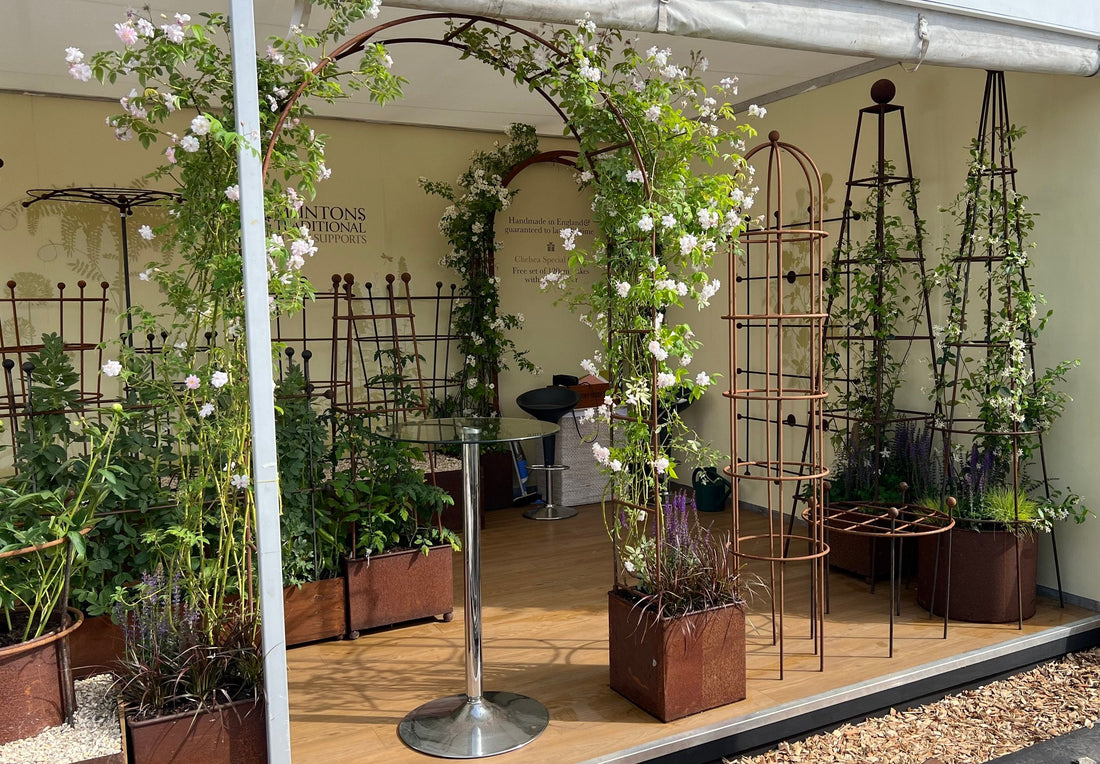
Reflections on RHS Chelsea 2022
SEO Space
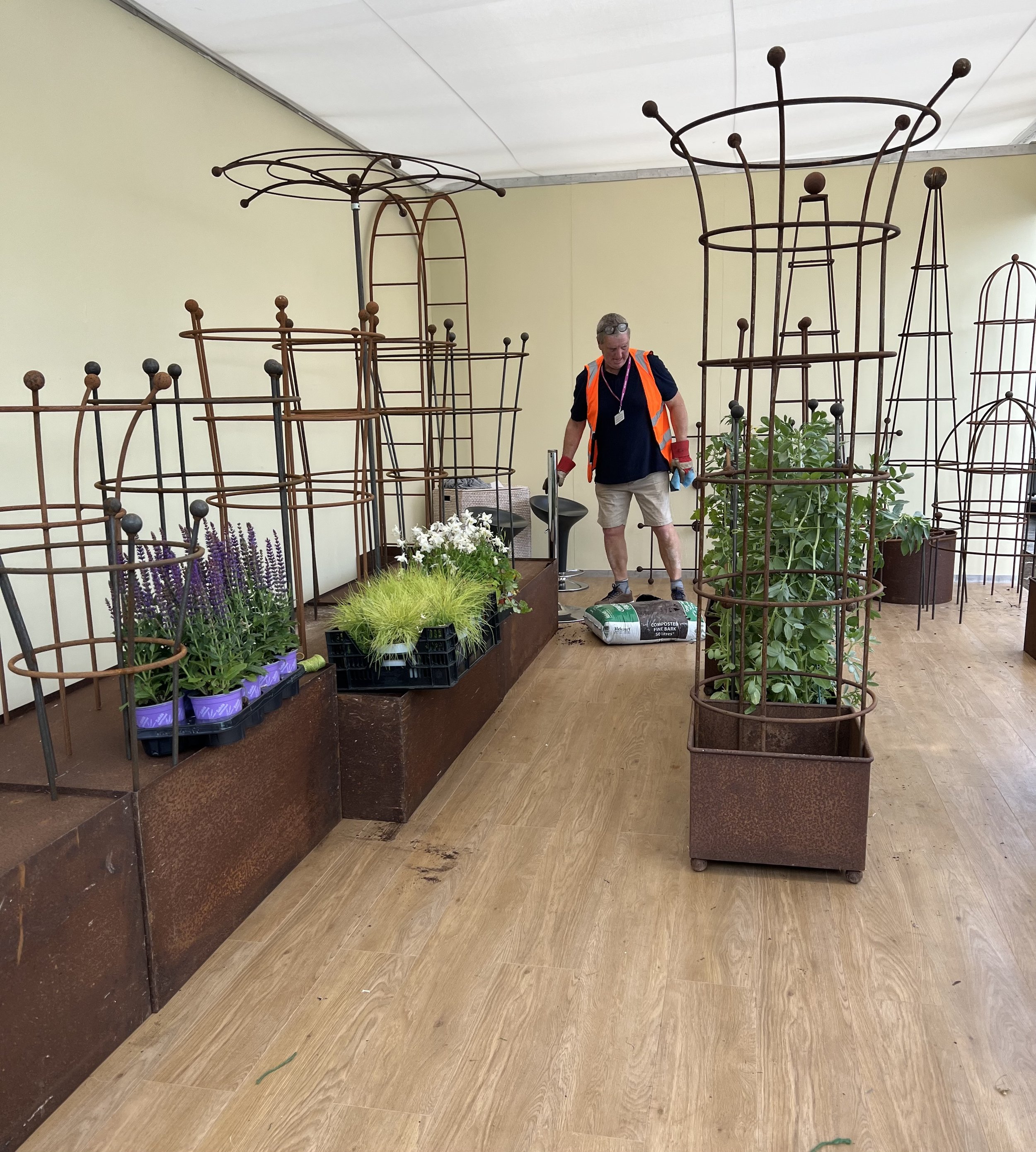
Bob and I move the steel onto the stand
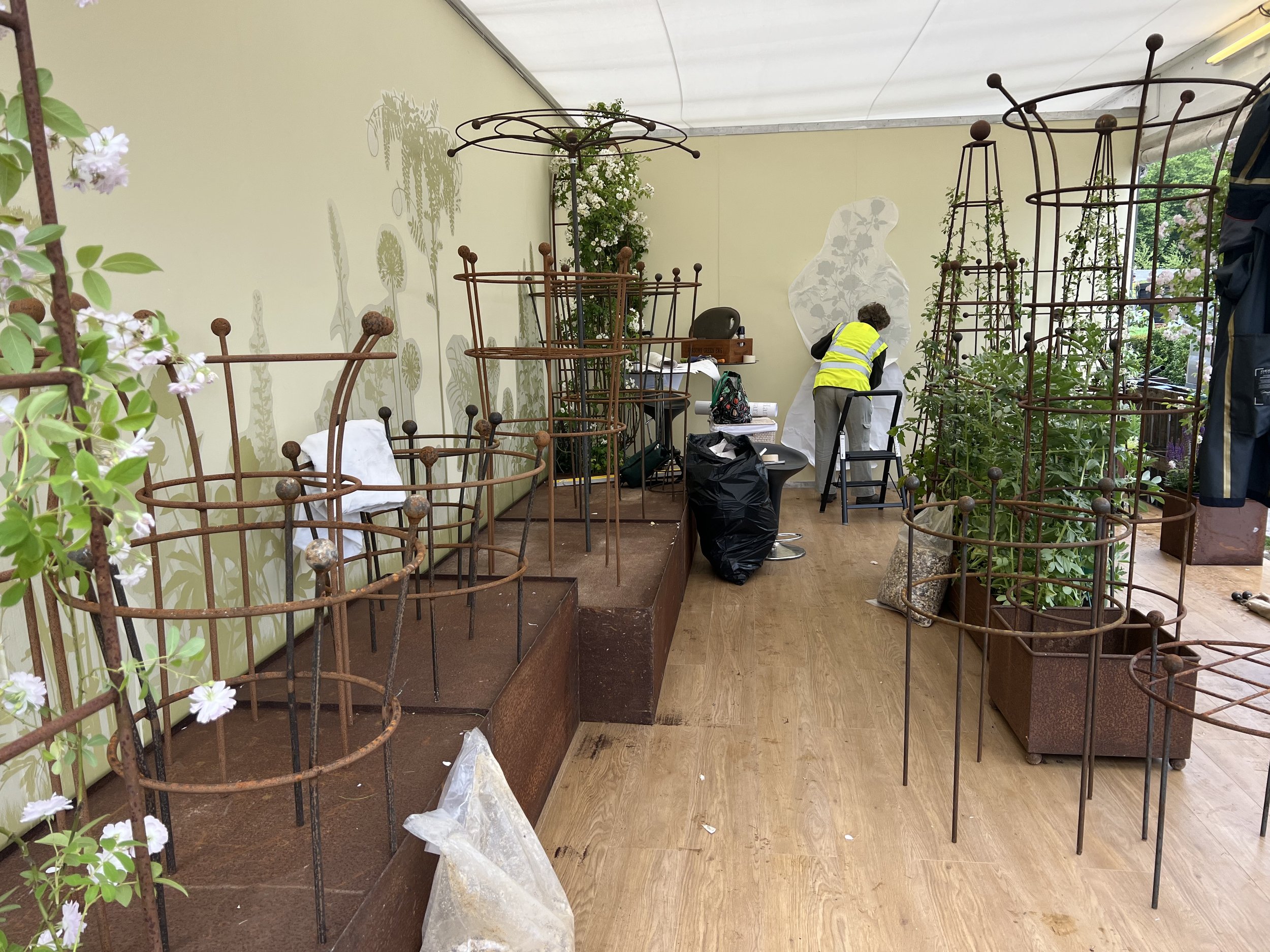
The graphics and planting begin
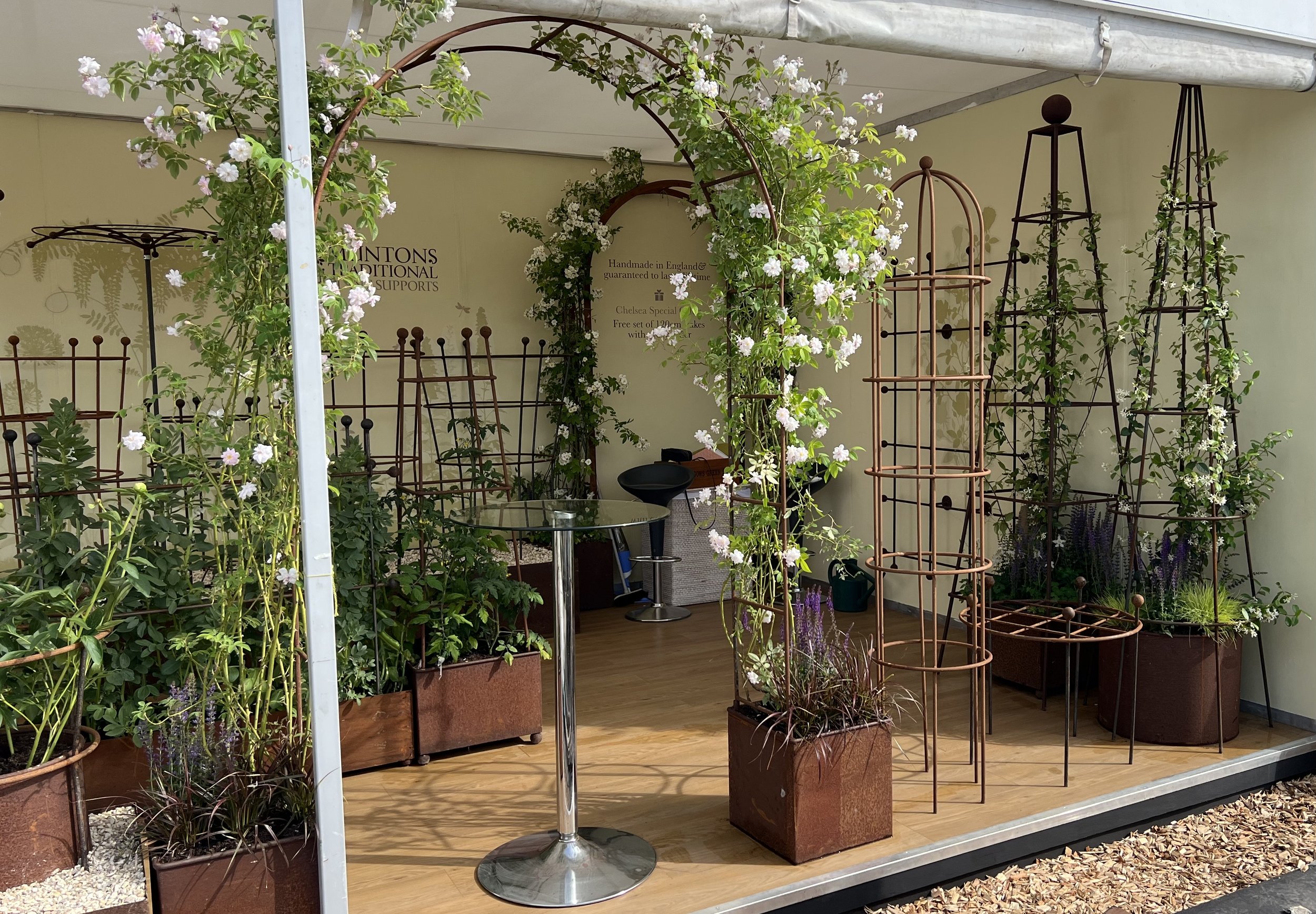
The stand is ready for the show opening caption here. One sentence.
Having just returned from the bustle and drama that is a Chelsea Flower Show, I thought I would pause and reflect on Chelsea 2022, on the plants and trends that I noticed and on what it means to be a Chelsea exhibitor.
Chelsea is probably the most stressful show of the year at which to exhibit. The historic nature of the site together with the sheer logistical difficulty of getting thousands of people and vehicles safely onto and off a site with a single entrance on The Embankment (already narrowed by sewerage works) is mind-boggling.
We were back in our normal position on Pavilion Way as we began on the Thursday before the show to move steel, mount graphics and plant up. Around us the garden designers and builders were digging holes, placing rocks and trees and planting hundreds of thousands of plants in weather that was either baking or sodden and cold.
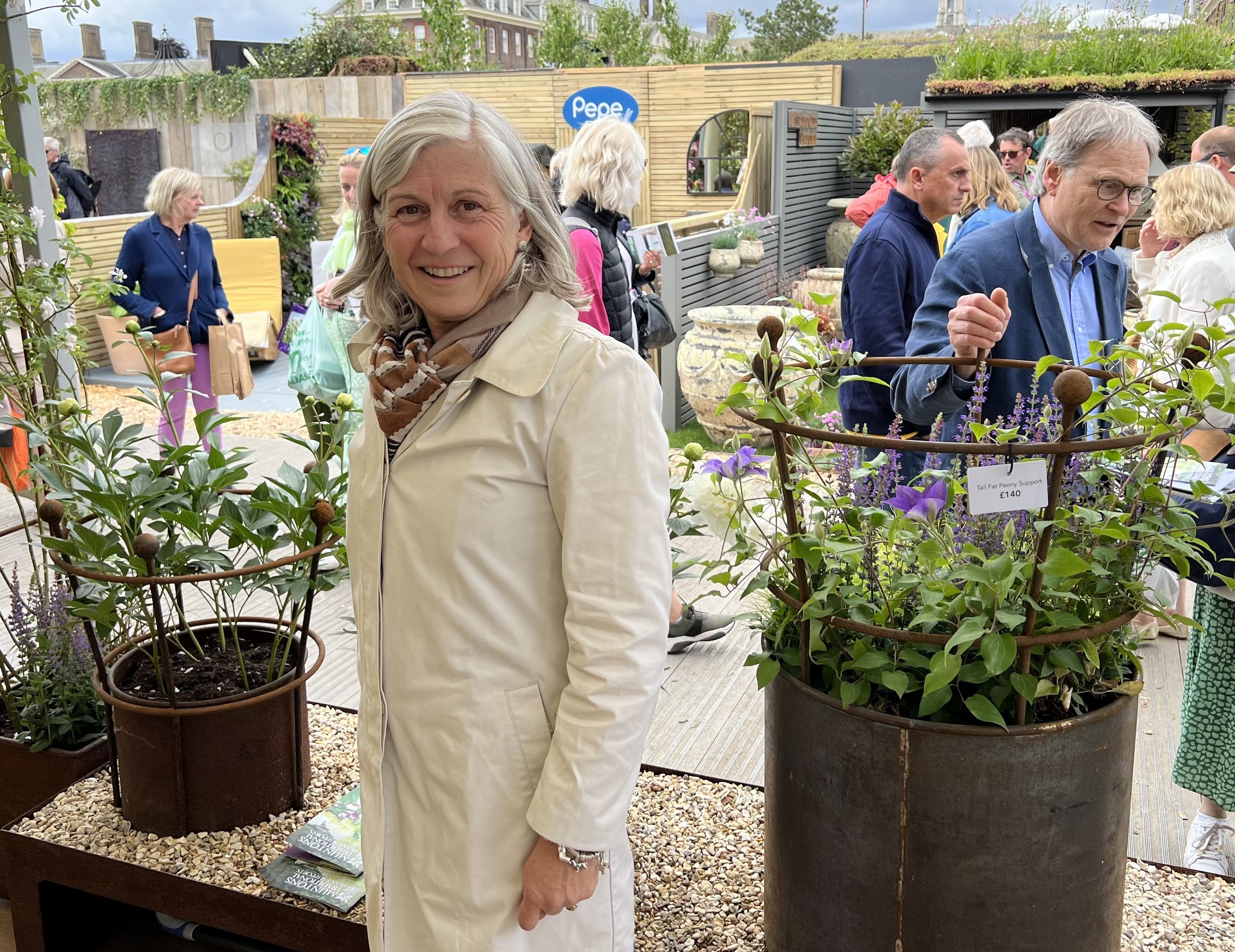
Fiona Wright visits our stand

The People’s Choice: Perennial garden ‘With Love’ designed by Richard Meirs
By Sunday afternoon, we were ready for the world of horticulture to walk past our doors beginning with Press Day and the Private View on Monday. One of our early visitors on Tuesday morning was Fiona Wright, the winner of a pair of our Regular 12mm Peony Supports donated to a raffle in support of Horatio’s Garden, a charity which creates and nurtures beautiful gardens to support everyone affected by spinal injuries and one that we are proud to be associated with. It was lovely meeting Fiona and we hope to show her peony supports with the plants inside in a future journal.
I was also delighted to meet Ade and Sophie Sellars who appear on Twitter, Facebook and Instagram as ‘agentsoffield’. Ade is a very knowledgeable vegetable grower and is trialing a number of our arches, obelisks and perennial supports in his vegetable garden this year – look out for an additional focus on vegetables on our Chelsea stand next year. Ade filmed a very nice little video on the stand about Bob and me – the result, I think, owes much more to his skill in editing than to me as a performer!
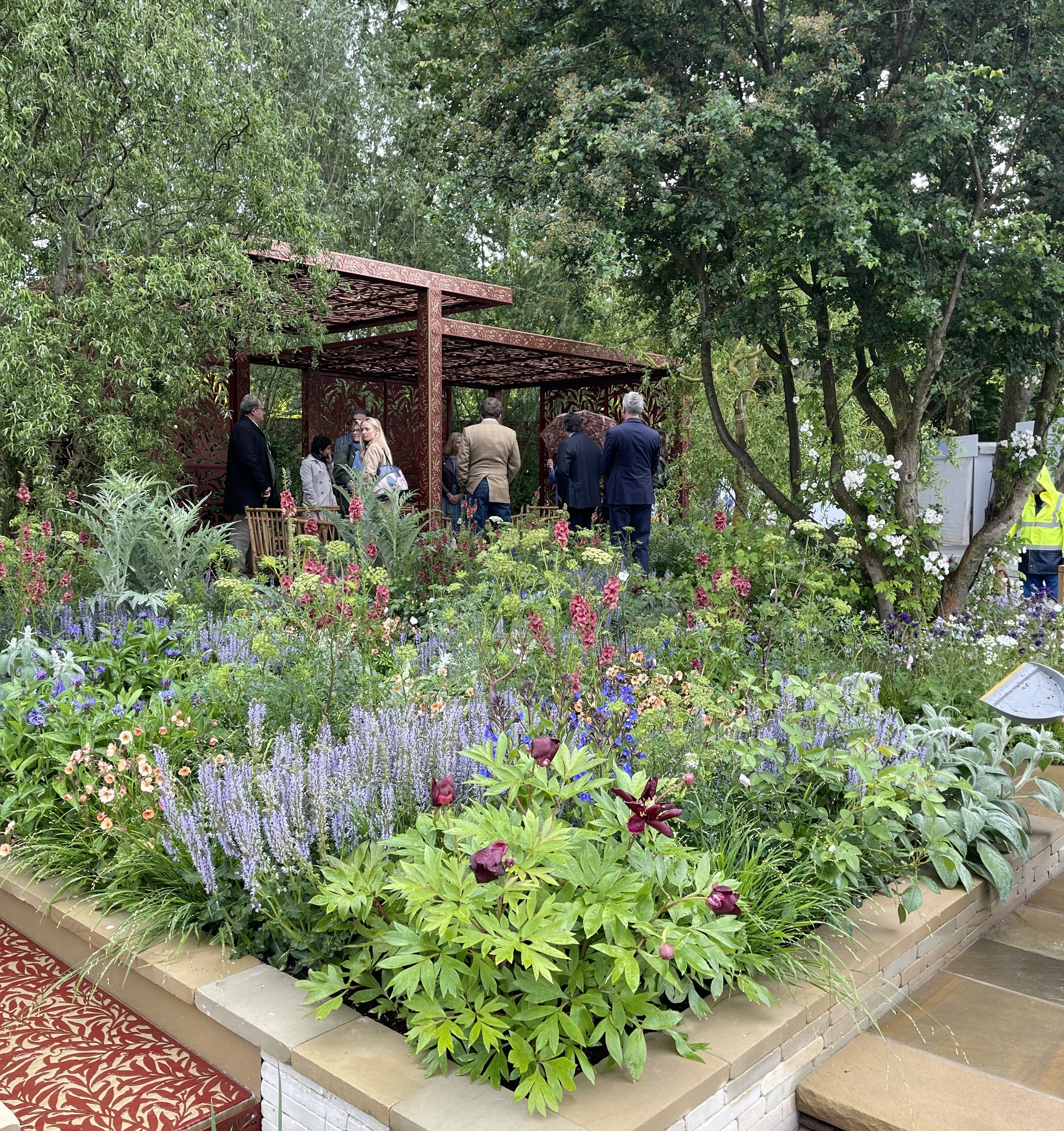
Camassias were popular in the show gardens
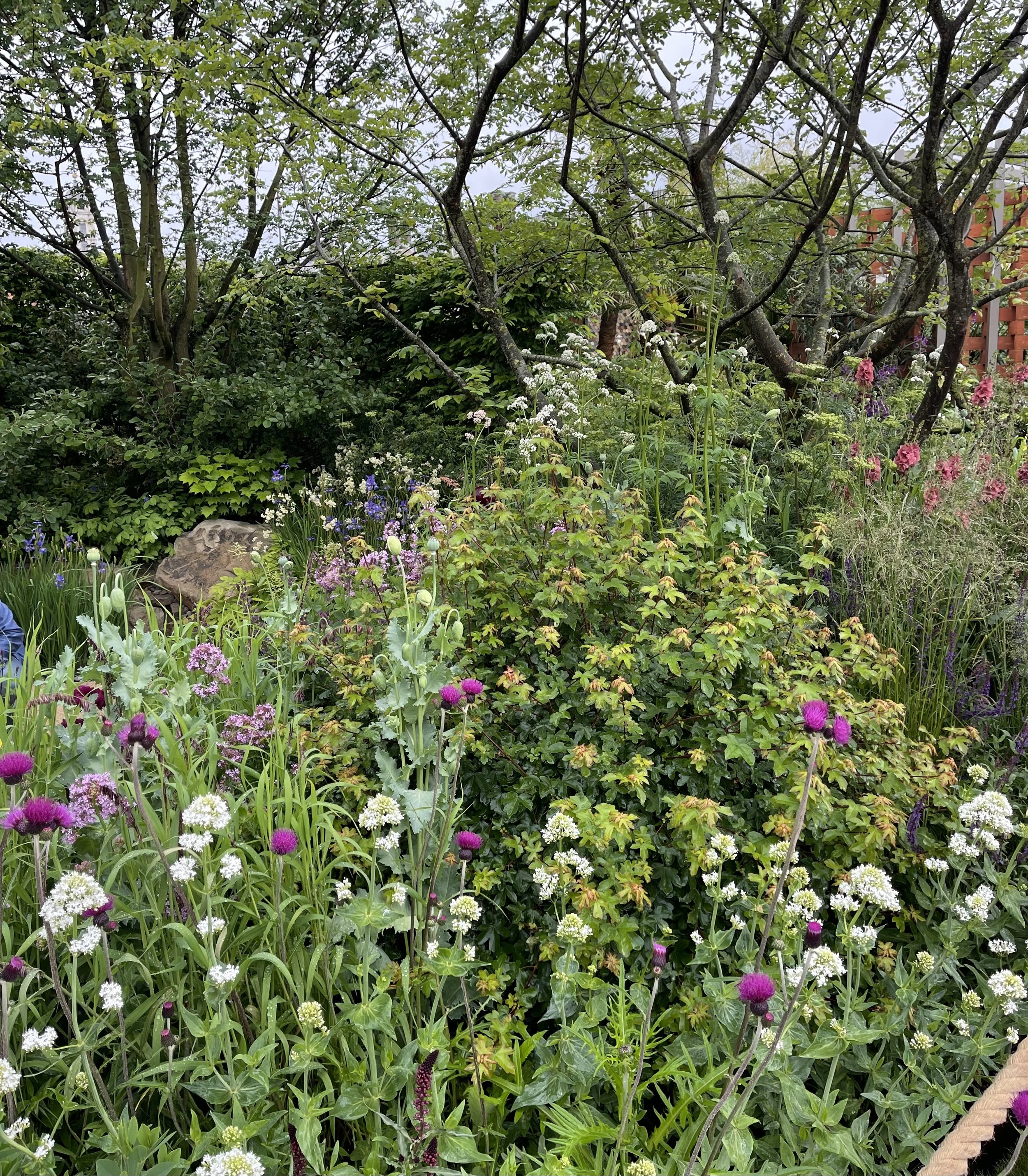
Cirsium rivulare sits well with more naturalistic planting

The wildflower meadow is not maintenance-free
I predicted on Instagram on Monday that The People’s Choice would be the Perennial Garden ‘With Love’ designed by Richard Meirs. I took a straw poll of visitors to the stand and it was the overwhelming favourite. Judges’ decisions at Chelsea are based on a tightly prescribed list of criteria and it is not always easy to understand the decisions reached but, as a gardening nation, we still respond very strongly to that cool and quintessentially English mood with calming colours; perennials such as lupins, roses and peonies and traditional planting.
I listened with great interest to the discussions between Jo Swift and Monty Don on the subject of: ‘is it a garden or is it a landscape’ and agree that this is a topic that RHS needs to address. Despite our love of the glorious countryside that surrounds us and our growing environmental awareness and belief in organic growing, we still, I think, want space for the quiet and calm of a traditional garden – balm for the soul.
What were the plants that caught my eye at Chelsea? I was struck by the revival of many of our favourite perennials: bearded irises (a renewed interest in the life and work of Cedric Morris together with his friend, Beth Chatto, has been noticeable recently); camassias were everywhere - it is a plant that adapts well to both formal gardens and wild flower meadows – it is seen to great effect in the meadows at Highgrove; lupins – beloved of a previous generation - are making a strong comeback (remember not to mulch the crowns, like peonies they like their crowns at soil level); one of my favourites, cirsium rivulare, the melancholy thistle, showed its purple heads to great effect in some of the more naturalistic plantings; alliums – I love alliums and combine the purple varieties with Geum ‘Totally Tangerine’ to great effect in the garden but I was particularly struck by some of the white varieties on show.
At the other end of the spectrum, there was a great emphasis on wildflowers and meadow planting. I have both a paddock and a wildflower meadow here on our bit of Cotswold farm land but they are not maintenance-free. The paddock is simply treated as an organic hay field with bee hives and is cut and left but the wild flower meadow has to be cut, the cuttings left for the seeds to fall and then all gathered and taken off the meadow so that the soil does not become enriched. Even then, the stronger plants dominate - this year I have noticed that black knapweed has taken over much of the meadow. It doesn’t trouble me, I am content to let it thrive; the only way to keep a meadow such as mine balanced is to plough it up and reseed every few years.
Finally…
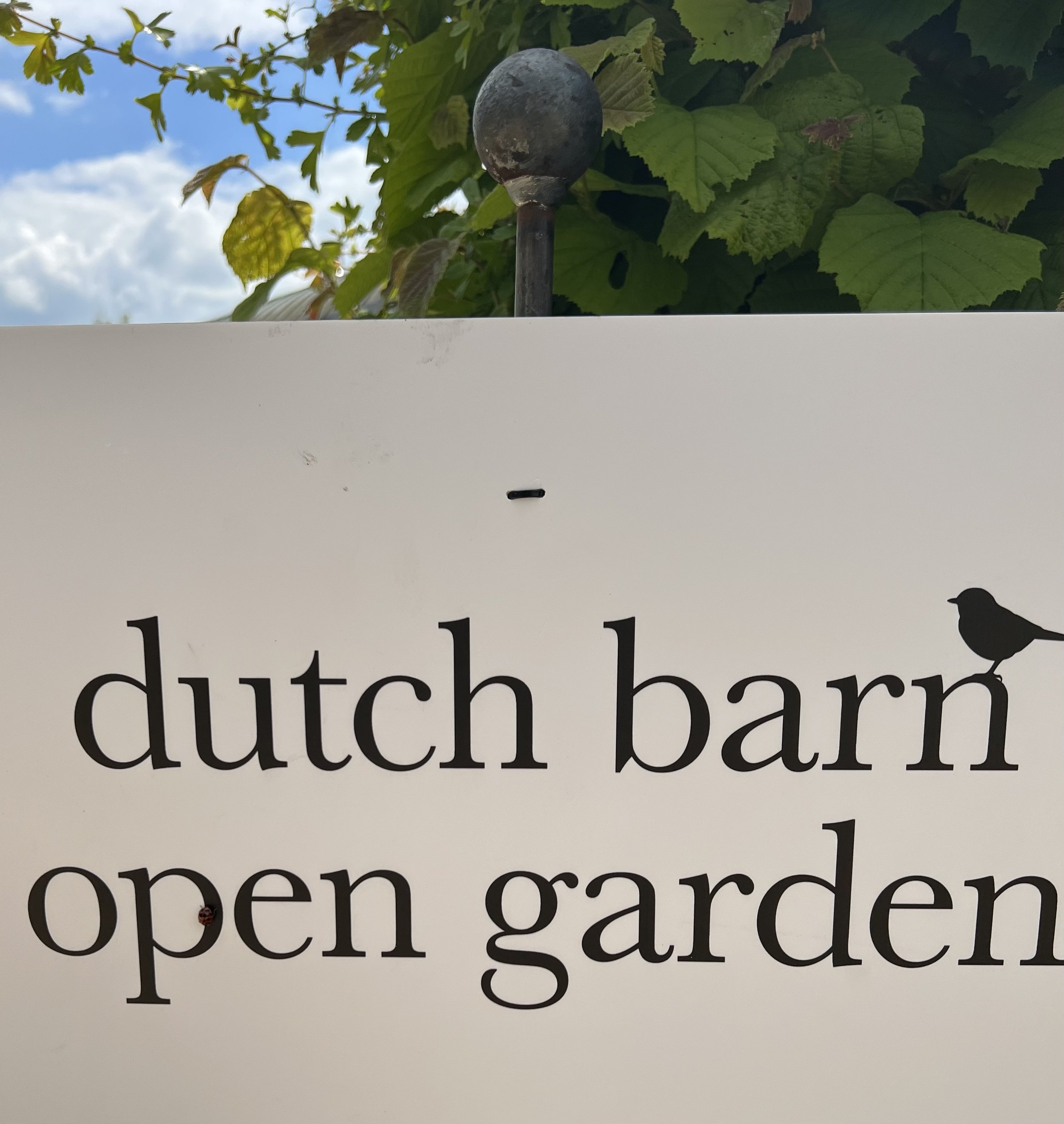
We open our garden for the villages of Kemble and Ewen
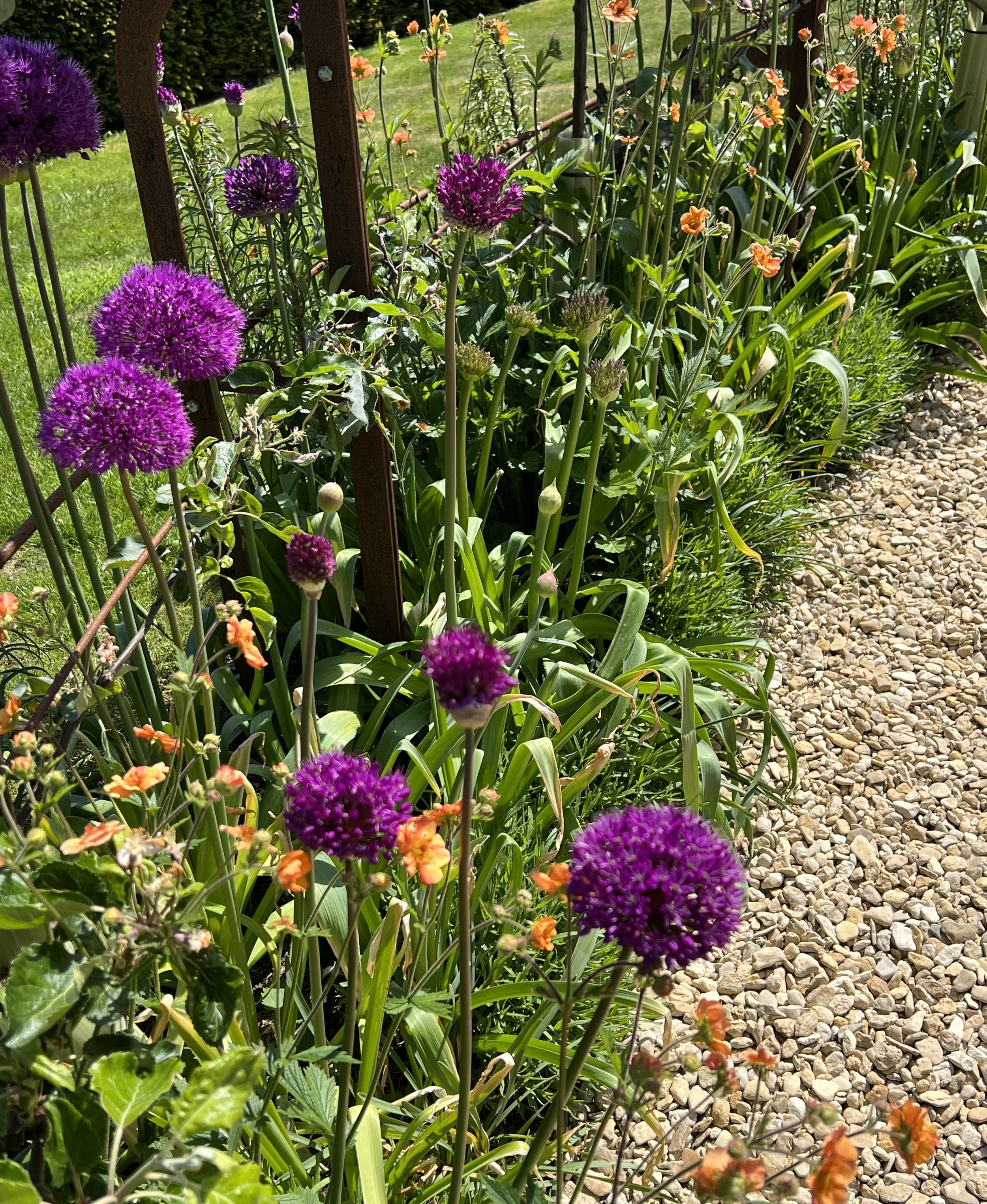
Alliums are set off by Geum ‘Totally Tangerine’
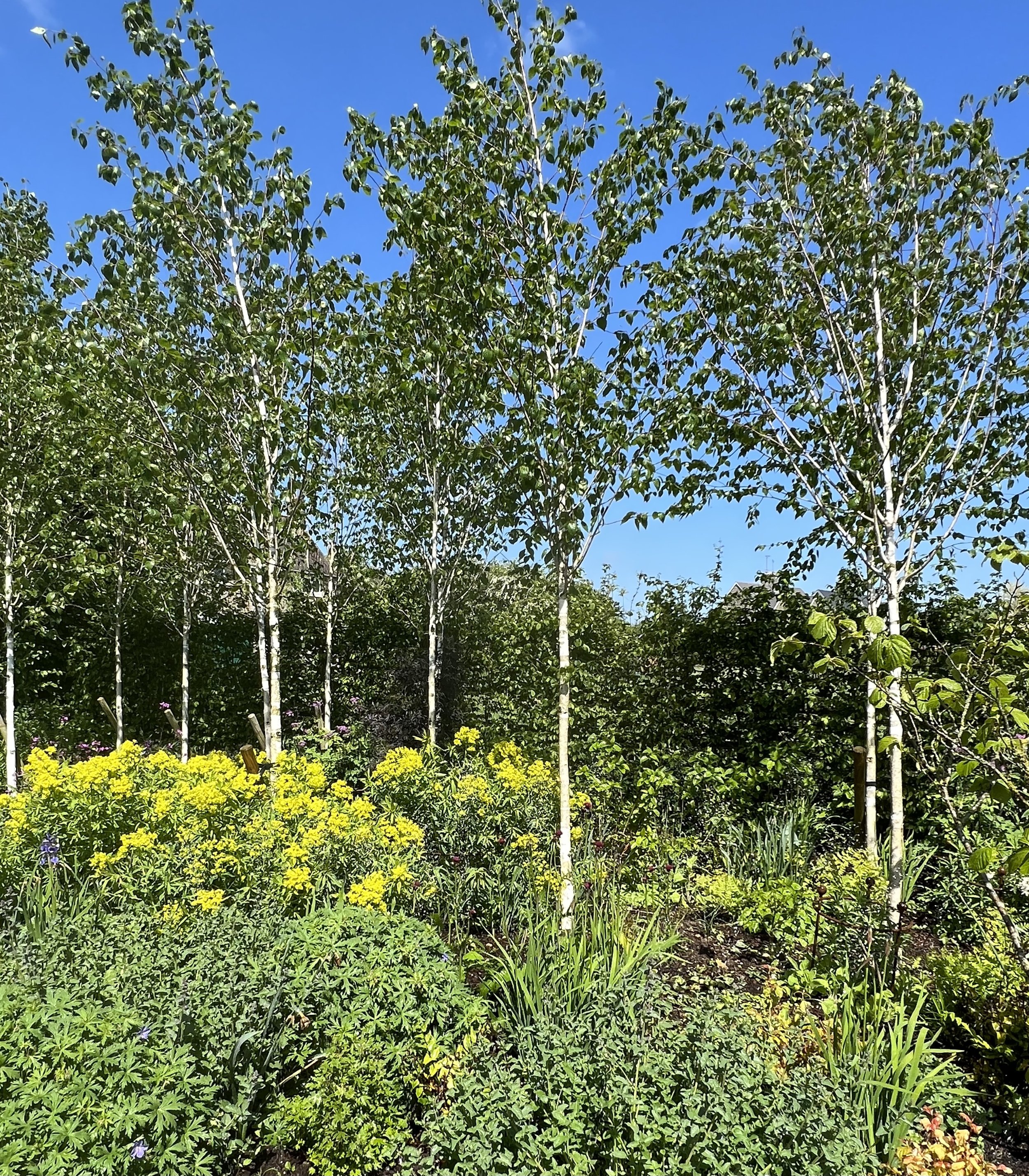
The woodland border
As part of the Jubilee celebrations, the villages of Kemble and Ewen opened their gardens for the villagers. We were very lucky to have chosen the best day of the long weekend and, after a bit of a post-Chelsea flurry, I was delighted to welcome about 80 people here (including 2 Ukrainian families who are living in the village). Opening your garden does take a bit of effort but people are always so positive and interested – the chickens had several honourable mentions with a number of people creeping up to get a photo in the belief that they were alive.
My large planters are beginning to put on growth; the sweet peas are climbing up the obelisks that house the young cultivated blackberries and I look forward to bringing you updates as the season goes on.


